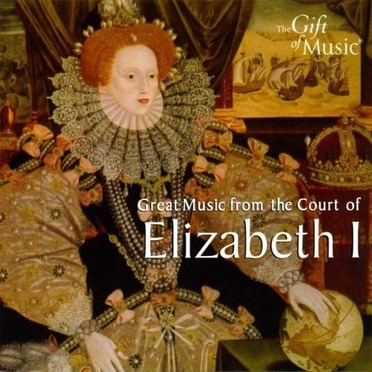










Elizabeth I
Glorious music from the rich and glamorous court of Elizabeth I, composed by her favourite composer, William Byrd (1543-1623), and other musicians of her time. Viols, flutes, lutes and voices combine in a striking programme of songs and dances. Great music for a cheerful Sunday morning!
The Elizabethan Consort Sara Stowe, voice Sharon Lindo, violin Wendy Hancock, treble viol and flute Lynda Sayce, lute Imogen Seth-Smith, bass viol Stewart McCoy, cittern, lute, tenor viol Roderick Morris, bass viol Matthew Spring, bandora, lute and bass viol
Elizabeth I's court was a great place to be a musician, and opportunities to make music were all around, whether for use in religious services, or for pleasurable moments during entertainment and relaxation. William Byrd was the queen's particular musical favourite, but this did not exclude others such as Morley or Allison from getting a hearing. This album concentrates on the secular rather than the sacred, and, from music in praise of the Queen, and of England, to dance tunes and songs, it presents a selection of many of the types of music which a courtier in late sixteenth century London would have heard and known.
A wide range of instruments can be heard, from the plaintive viols in various sizes, large and small, to lutes and flutes and their more familiar sounds. The viols are especially important, since they give a good sense of the sounds world of the English Renaissance. These instruments, like modern day violins and cellos, are played with the bow, but even the smallest of them, the treble viol, is played resting on the knees. The viols have frets, like guitars and lutes, and their antique sounds are especially evocative of ages past. Many of the pieces are songs, accompanied by a 'broken consort' - various instruments, plucked, bowed and blown, to make a superbly rich sound, like that of a miniature orchestra. Particularly noticeable in this consort is the fine lute part, which scurries about in between the slower notes of the bowed instruments, in fine virtuoso form. The violin seems always to have the tune, but careful listening will reveal that each instrument has its own importance. The bass instruments in this consort include the viol, and the unusual bandora, a sort of large guitar invented in 1562, which was considered an essential part of such a group.
The viols also play a separate group, including a beautiful fantasia by William Byrd. In the 'Fantasia a3', these instruments are joined by the singer. She sings the notes of her part as 'sol-fa', creating an interesting, semi-instrumental role for the voice. Although this seems unusual to us now, it was a typical feature of performances in Elizabeth's time. The abstract sounds are soothing, and we can focus on the purity and beauty of the singer's tone. Sara Stowe has one of the finest voices for this music of any, and she is ably accompanied by the Elizabethan Consort, a group of musicians brought together specially for this recording.
| Track | Artist | Duration |
|---|---|---|
| La Rosignall | 2:30 | |
| Duncomb's Galliard | 1:55 | |
| The Frog Galliard | 3:29 | |
| O Noble England - Mounsier's Almaine | 3:10 | |
| Lord, in Thy Rage | 2:34 | |
| Rejoice unto the Lord | 4:04 | |
| Time Stands Still | 4:04 | |
| Bergamasca | 1:10 | |
| In Angel's Weed | 3:32 | |
| The Batchelar's Delight | 3:46 | |
| The Ladye Frances Sydney's Almain | 1:43 | |
| The Widow's Mite | 3:20 | |
| O Mistress mine | 2:56 | |
| Out Of The Orient Crystal Skies | 3:52 | |
| Susanna Fair | 3:23 | |
| In nomine | 2:06 | |
| Pavan | 3:45 | |
| Say Love if Ever Thou Didst Find | 2:09 | |
| Drewries Accordes | 1:38 | |
| Fantasia a 3 | 2:48 | |
| Fantasia a 4 | 3:10 |

